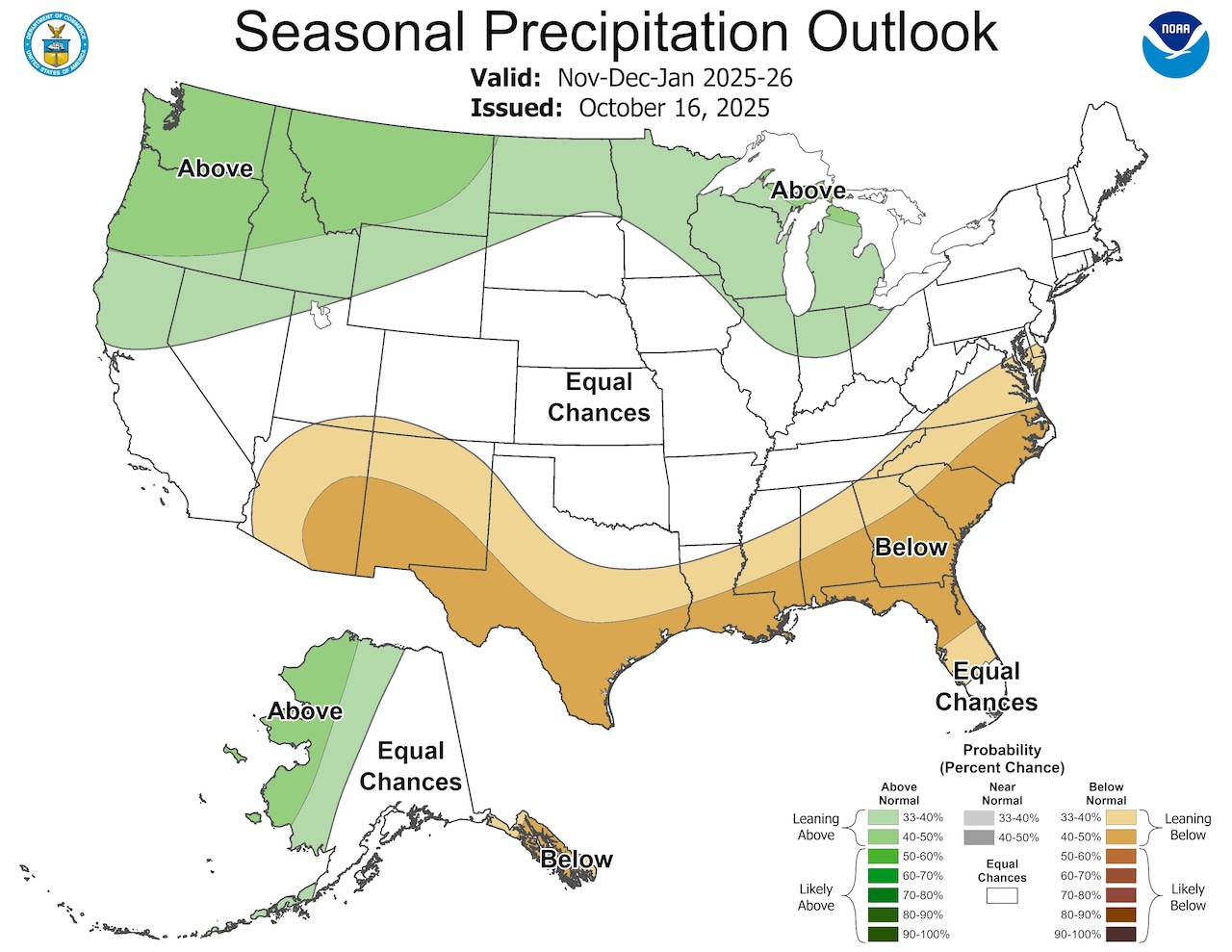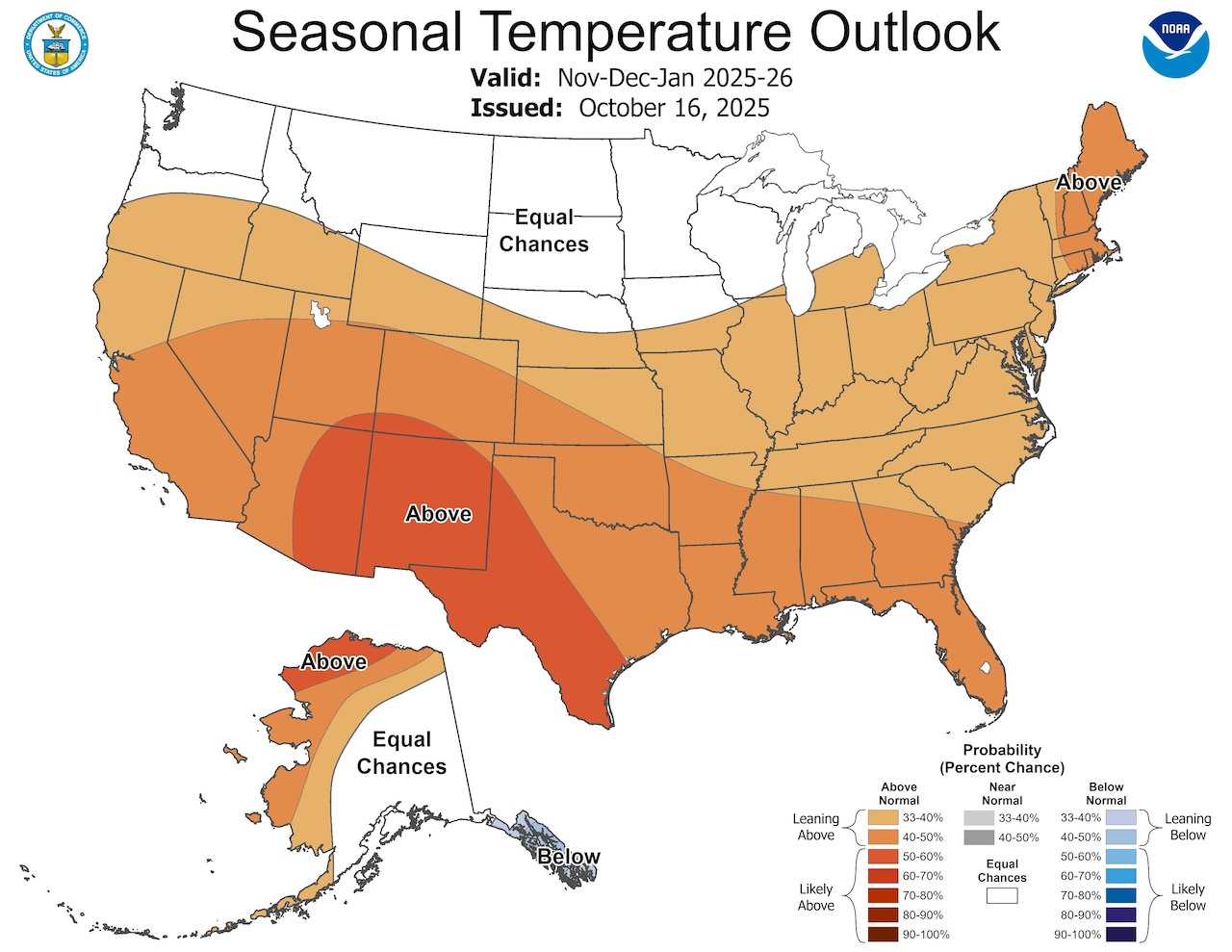It’s no secret that New York state can get quite cold from November through January, but a recent seasonal outlook reveals that there is a chance it may not be as cold as usual.
A seasonal temperature outlook issued on Oct. 16 by the National Weather Service’s Climate Prediction Center shows the entirety of New York has a 33% to 40% probability of above-average temperatures predominantly characterizing the months of November, December and January.
Meteorological winter does not begin until Dec. 1, meaning that this outlook includes the end of fall and the first two months of winter.
For the Central Park area, the mean average temperatures for November, December and January are 48, 39.1 and 33.7 degrees, respectively, according to National Oceanic and Astmospheric Administration data from 1991-2020.
 The Climate Prediction Center’s seasonal precipitation outlook for the months of November through January shows equal odds of above-average or below-average precipitation in New York.(National Weather Service’s Climate Prediction Center)
The Climate Prediction Center’s seasonal precipitation outlook for the months of November through January shows equal odds of above-average or below-average precipitation in New York.(National Weather Service’s Climate Prediction Center)
In addition to the seasonal temperature outlook, the Climate Prediction Center also issued a seasonal precipitation outlook for the same three months.
As indicated in that outlook, there are equal odds of experiencing above-average or below-average precipitation amounts throughout New York.
For reference, Central Park typically records 3.58, 4.38 and 3.64 inches of precipitation in November, December and January, respectively, a National Oceanic and Atmospheric Administration data set revealed.
Also issued on Oct. 16 were November weather outlooks and a set of outlooks forecasting conditions for December through February.
The November outlook revealed that the month is largely shaping up to feature rather average weather conditions. However, the city and part of Long Island are given a 33% to 40% probability of experiencing less precipitation than usual this November.
As noted in the seasonal temperature outlook encapsulating the months of December, January and February, the areas of New York from the Hudson Valley on south, including New York City, have a 33% to 40% chance of generally recording above-average temperatures.
If you purchase a product or register for an account through a link on our site, we may receive compensation. By using this site, you consent to our User Agreement and agree that your clicks, interactions, and personal information may be collected, recorded, and/or stored by us and social media and other third-party partners in accordance with our Privacy Policy.

